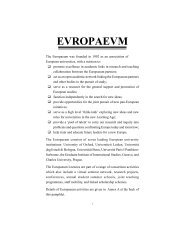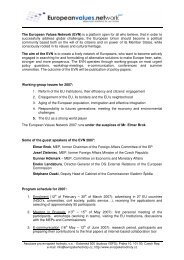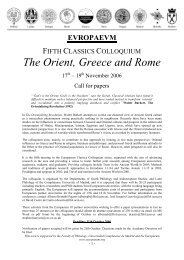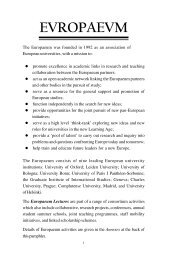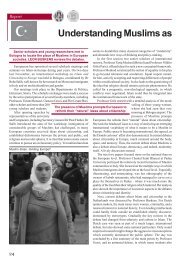Authors Iain Begg | Gabriel Glöckler | Anke Hassel ... - The Europaeum
Authors Iain Begg | Gabriel Glöckler | Anke Hassel ... - The Europaeum
Authors Iain Begg | Gabriel Glöckler | Anke Hassel ... - The Europaeum
You also want an ePaper? Increase the reach of your titles
YUMPU automatically turns print PDFs into web optimized ePapers that Google loves.
as the emergence of high-tech start ups in countries such as Estonia, and<br />
hints of tripartite agreements in Romania, confirms the view according to<br />
which a differentiated pattern of development is present among the least<br />
developed EU countries. At the same time, the importance of regional<br />
differences in countries like the UK, Italy, Spain, and Germany, suggest<br />
that patterns of institutional complementarity are not only a feature of<br />
the national level, as suggested by the first formulation of the VoC, but<br />
are developing also at the sub-national level. It is possible to hypothsise<br />
that the completion of the single market and the increased economic<br />
integration of EU countries has increased the relative importance of<br />
local institutions as sources of comparative advantages. An increased<br />
knowledge of these patterns, carried out through cooperation between<br />
research units within EU institutions, academia, and member states, can<br />
point not only to a more refined understanding of the economic reforms<br />
that are likely to succeed, but also to a more specific set of criteria to orient<br />
EU cohesion funds.<br />
Chapter 8 – Dermot Hodson and Marco Simoni 127




